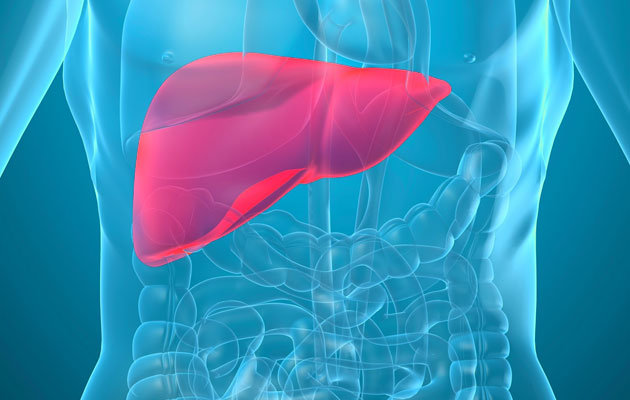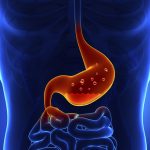Know all about Liver Abscess. What is Liver Abscess, How Liver Abscess occur, how to cure Liver Abscess etc.
- A liver abscess (AB-ses) is a collection of pus in the liver caused by bacteria, fungi, or parasites. It may occur as a single lesion or as multiple lesions of different sizes. It is commonly caused by an infection with bacteria (germs) or ameba (parasite that causes diarrhea). A bacterial liver abscess often happens after an abdominal (stomach) infection. This may include infections of the bile ducts caused by gallstones, infection in the intestines, or appendicitis. Pain on the right upper part of your abdomen, fever, and night sweats are common signs and symptoms. You may also have loss of appetite, nausea (upset stomach), vomiting (throwing up), or unplanned weight loss. Sometimes, cough, trouble breathing, or yellowing of the skin and whites of the eyes, may be present.
- A liver abscess may be diagnosed by blood or imaging tests that take pictures of your abdomen. These may include x-rays, liver scan, ultrasound, computerized tomography (CT) scan, and a magnetic resonance imaging (MRI). Treatment will depend on the cause, size, and location of your liver abscess. It will also depend on whether you have a single or multiple abscesses. Medicines may be given to kill the infection and ease your symptoms. Caregivers may drain the abscess or do surgery to help remove the pus in your liver. With treatment and care, your abscess may be cured and serious problems may be prevented.
Liver Abscess CARE AGREEMENT:
You have the right to help plan your care. Learn about your health condition and how it may be treated. Discuss treatment options with your caregivers to decide what care you want to receive. You always have the right to refuse treatment.
Liver Abscess RISKS:
Treatment for liver abscess may cause unpleasant effects. Draining the abscess may spill the pus into your abdomen (stomach) and may cause a severe infection. Medicines may cause side effects, such as itching, nausea, vomiting, or seizures (convulsions). If left untreated, your problems could get worse and may be life-threatening. Fluid could gather between the lungs and the ribs causing breathing problems. The abscess may burst and spread the infection throughout the body. Ask your caregiver if you are worried or have questions about your liver abscess, care, or treatment.
WHILE YOU ARE HERE:
Informed consent:
A consent form is a legal document that explains the tests, treatments, or procedures that you may need. Informed consent means you understand what will be done and can make decisions about what you want. You give your permission when you sign the consent form. You can have someone sign this form for you if you are not able to sign it. You have the right to understand your medical care in words you know. Before you sign the consent form, understand the risks and benefits of what will be done. Make sure all your questions are answered.
IV:
An IV (intravenous) is a small tube placed in your vein that is used to give you medicine or liquids.
Medicines for Liver Abscess:
You may be given the following medicines:
- Antibiotics: This medicine is given to help treat or prevent an infection caused by bacteria.
- Antifungal medicine: This medicine helps kill fungus that can cause illness.
- Antinausea medicine: This medicine may be given to calm your stomach and prevent vomiting.
- Antiparasitic medicine: This medicine may be given to kill parasites. Parasites are living things that feed or eat off of other living things.
- Pain medicine: Caregivers may give you medicine to take away or decrease your pain.
- Do not wait until the pain is severe to ask for your medicine. Tell caregivers if your pain does not decrease. The medicine may not work as well at controlling your pain if you wait too long to take it.
- Pain medicine can make you dizzy or sleepy. Prevent falls by calling a caregiver when you want to get out of bed or if you need help.
Tests for Liver Abscess:
You may need any of the following tests:
- Blood tests: You may need blood taken to give caregivers information about how your body is working. The blood may be taken from your hand, arm, or IV.
- Computerized tomography scan: This is also called a CT scan. A special x-ray machine uses a computer to take pictures of your abdomen, including your liver. You may be given dye through an IV before the pictures are taken so that your organs show clearly. People who are allergic to iodine or shellfish (lobster, crab, or shrimp) may be allergic to some dyes. Tell your caregiver if you are allergic to shellfish or have other allergies or health problems.
- Liver scan: This is a test to look at your liver. You are given a small amount of dye in your IV. Pictures are then taken by a special scanner that can see the dye in your body. The dye soaks up more in abnormal areas of the liver.
- Magnetic resonance imaging test: This test is also called an MRI. It uses magnetic waves to look at the liver. You will need to lie still during an MRI. Never enter the MRI room with an oxygen tank, watch, or any other metal objects. This can cause serious injury.
- Ultrasound:
- Abdominal ultrasound: This test is done so caregivers can see the tissues and organs of your abdomen. Gel will be put on your abdomen and a small sensor will be moved across your abdomen. The sensor uses sound waves to send pictures of your abdomen to a TV-like screen.
- Doppler ultrasound: This is a test that uses sound waves to see your veins on a TV-like screen. A doppler ultrasound study may also be called a duplex scan. Caregivers look for clots in the veins near the area of your pain and redness. You also may be able to hear your blood flow during this test.
- X-rays:
- Abdominal x-rays: Abdominal x-rays are pictures of the organs inside your abdomen. Caregivers use these pictures to look for problems such as blocked or ruptured intestines, kidney stones, or solid masses (tumors) in your organs.
- Chest x-ray: This is a picture of your lungs and heart. Caregivers use it to see how your lungs and heart are doing. Caregivers may use the x-ray to look for signs of infection like pneumonia, or to look for collapsed lungs. Chest x-rays may show tumors, broken ribs, or fluid around the heart and lungs.
Treatment for Liver Abscess:
- Catheter drainage: Caregivers make an incision (cut) into your abdomen, over your liver. With an ultrasound or CT as guide, a catheter (tube) is inserted in the cut and into the abscess. Draining the abscess may clean out any pus in your abdomen. The incision will be closed with thread or staples. The catheter may be sutured (sewn) to the skin to prevent it from moving. The catheter may need to be flushed with a saline (salt-water) solution once in a while.
- Needle aspiration: Caregivers may do a needle aspiration to suck the fluid out of the abscess. With an ultrasound or CT as guide, a needle is put through your skin over your liver and into the abscess. The fluid is removed and sent to the lab for tests.
- Surgery: Surgery to open your abdomen may be done if other forms of treatment have failed. It may also be done if the abscess is very large or if there are multiple lesions. Caregivers may do surgery to look for and correct problems inside your abdomen. This may include removing bile duct stones or cleaning pus if the abscess burst.
Copyright © 2012. Thomson Reuters. All rights reserved. Information is for End User’s use only and may not be sold, redistributed or otherwise used for commercial purposes.
The above information is an educational aid only. It is not intended as medical advice for individual conditions or treatments. Talk to your doctor, nurse or pharmacist before following any medical regimen to see if it is safe and effective for you.



